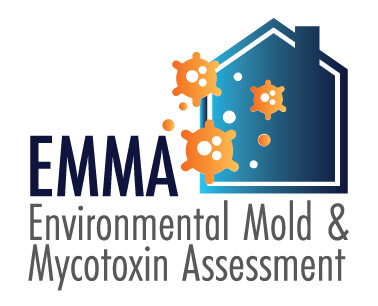Just How Mycotoxin Testing Aids Stop Contamination and Safeguard Food Products

Mycotoxin screening is an important practice in the food sector, offering as a frontline protection versus contamination by unsafe toxins produced by molds. Via the application of sophisticated strategies like High-Performance Fluid Chromatography (HPLC) and Liquid Chromatography-Mass Spectrometry (LC-MS), food manufacturers can accurately detect and quantify mycotoxin levels in farming products.
Comprehending Mycotoxins
Recognizing mycotoxins begins with acknowledging that they are hazardous additional metabolites generated by specific mold and mildews, which can contaminate farming items. These metabolites are not essential for the development or reproduction of the fungi but can have severe implications for human and animal wellness. Mycotoxins are commonly located in staple plants such as corn, wheat, barley, and nuts, where they can proliferate under specific conditions of dampness and temperature.
There are several types of mycotoxins, each created by various fungal varieties. Fusarium varieties generate trichothecenes and fumonisins, both of which are linked with various severe and persistent health and wellness concerns.

Dangers of Mycotoxin Contamination
The threats of mycotoxin contamination are diverse, posing considerable threats to both food security and public wellness. Mycotoxins, harmful substances produced by specific sorts of fungi, can infect a vast array of farming items including grains, nuts, spices, dried out fruits, and coffee. When these toxic substances infiltrate the food supply, they can lead to significant health and wellness problems such as liver damage, kidney failing, and even cancer cells. Prone populations, consisting of children, the senior, and immunocompromised individuals, are specifically at risk.
Economic impacts are another significant concern. Infected plants can cause considerable economic losses for farmers and food manufacturers as a result of minimized returns and the requirement for costly decontamination measures. Additionally, worldwide trade can be dramatically impeded as nations impose stringent mycotoxin laws to protect their populaces, bring about rejected shipments and stretched trade connections.
Environmental elements such as climate change worsen the danger of mycotoxin contamination. Variants in temperature and humidity can create positive problems for fungal development, raising the likelihood of contamination events. Thus, understanding and reducing these risks are important for making certain the safety and integrity of global food products.
Approaches of Mycotoxin Examining
Accurately recognizing mycotoxin contamination in farming items is crucial for guarding public wellness and keeping food security requirements. Different methods are employed to detect and evaluate mycotoxins, each offering certain advantages and limitations.
High-Performance Liquid Chromatography (HPLC) is an extensively made use of technique because of its high sensitivity and accuracy. It entails separating mycotoxins from other materials in an example, allowing accurate metrology. Liquid Chromatography-Mass Spectrometry (LC-MS) combines fluid chromatography with mass spectrometry to offer detailed molecular details, making it particularly valuable for determining multiple mycotoxins all at once.

Gas Chromatography-Mass Spectrometry (GC-MS) and Thin-Layer Chromatography (TENDER LOVING CARE) are additionally used, each with one-of-a-kind applications. GC-MS works for unpredictable mycotoxins, while tender loving care uses an easier, economical option for preliminary screening.
Benefits of Normal Examining
Normal screening for mycotoxins in agricultural products supplies countless advantages, substantially adding to public health and wellness and food safety. By recognizing contamination early, normal testing helps prevent the circulation of poisonous foods, consequently decreasing the risk of mycotoxin-related diseases amongst customers. This positive approach not just safeguards human wellness however likewise enhances the total top quality of food materials.
Various countries and areas have actually established rigid limits for mycotoxin levels in food and feed. Adhering to these limitations via regular screening makes certain that producers and vendors satisfy lawful criteria, thereby staying clear of penalties and trade barriers.
Additionally, routine mycotoxin screening can bring about significant economic benefits. Early discovery of contamination allows for timely intervention, minimizing possible losses from prevalent contamination. Implementing regular screening methods can additionally minimize recall expenses and associated responsibilities, which can be monetarily ruining.
Furthermore, regular testing offers beneficial information that can educate far better farming techniques and storage problems. By recognizing patterns of contamination, producers can adopt safety nets, consequently adding and lowering future threats to the sustainability of the food supply chain.
Implementing Evaluating Procedures
Implementing effective mycotoxin testing methods is critical for making sure the safety and top quality of farming products. Each stage should be looked at to identify where mycotoxin contamination is most likely to occur.
As soon as vital control factors are determined, selecting proper testing approaches is important. Usual methods consist of enzyme-linked immunosorbent assay (ELISA), high-performance liquid chromatography (HPLC), and mass spectrometry (MS) Each approach has its staminas and weak points; thus, selecting the correct one depends upon the specific mycotoxin being checked, the called for sensitivity, and readily available resources.

Finally, integrating the screening protocols right into an extensive food safety monitoring system is recommended. This enhances traceability and allows swift rehabilitative actions when contamination is detected, therefore protecting the integrity of the food supply chain.
Verdict
Mycotoxin screening is crucial in stopping contamination and protecting food materials by enabling very early discovery of harmful contaminants produced by mold and mildews in agricultural products. Routine testing boosts brand credibility, economic security, and count on in food safety by lessening contamination-related losses and keeping high standards in food production.
Mycotoxin screening is a crucial technique in the food sector, serving as a frontline defense against contamination by harmful toxins produced by molds. An incorporated strategy including agricultural methods, storage check here monitoring, and routine screening can alleviate the dangers linked with mycotoxin contamination, making certain food safety and security and public health and wellness.
The dangers of mycotoxin contamination are multifaceted, posturing substantial hazards to both food security and public health and wellness.Routine testing for mycotoxins in farming items uses various benefits, significantly adding to public health and wellness and food security.Mycotoxin testing is essential in preventing contamination and guarding food materials by enabling very early discovery of damaging toxic substances produced by molds in agricultural items.